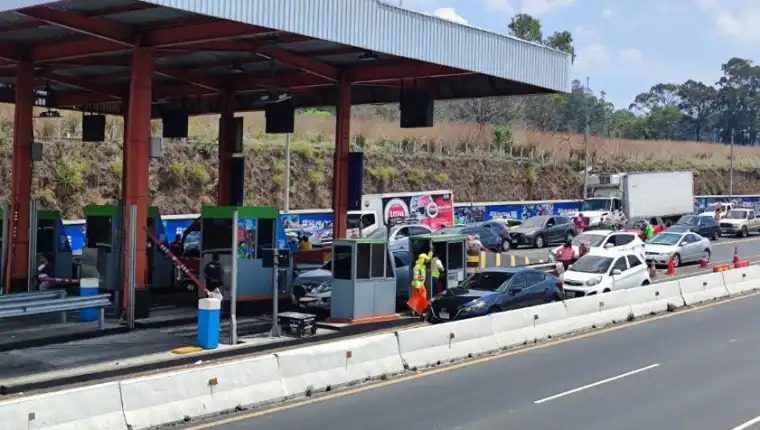Global Courant 2023-04-25 04:03:27
After the confirmation by President Alejandro Giammattei last Saturday, that as of May 1, 2023 there will no longer be toll collection on the Palín-Escuintla highway, the question remains about how long the section will last in three hypothetical scenarios : with the same vehicle load and without maintenance; with a higher vehicle load and with maintenance; and with an increase in vehicle load, without maintenance.
Currently, it is estimated that an average of 22,000 vehicles (between light and heavy) circulate daily on this highway. Taking as a reference the traffic study of the new highway project under the modality of Public-Private Partnership (PPP), Escuintla-Puerto Quetzal, an average of 35,000 vehicles per year would be expected, which would mean an increase of 50%.
In addition, according to the Pavement Condition Index methodology, if the road were in optimal condition, that is, at 100 points in the indicator, it would require significant maintenance within a period of 18 months, assuming that the pace is maintained on average of 22 thousand vehicles daily per year.
Scenario 1: same traffic of vehicles (quantity, weights and dimensions, without maintenance
According to Jorge Benavides, a researcher at the Foundation for the Development of Guatemala (Fundesa), estimates establish that the current condition of the section is between 80-85 points in the Pavement Condition Index. Significant maintenance intervention will be required in no more than 1 year.
The approximate cost of maintaining the highway, per linear kilometer in one direction that contemplates three lanes, is about Q2.7 million. The highway has three lanes in each direction.
According to Benavides, if this maintenance is not given, in 6 more months, that is, a year and a half later, the maintenance cost would multiply between 5 and 7 times per kilometer, which would imply an intermediate value of Q16.2 million per kilometer. linear, due to an accelerated deterioration process (minor potholes, “crocodile skin”, damage to the drainage system).
If this maintenance is not given in 6 more months, that is, in two years, the maintenance cost would multiply between 15 and 30 times per kilometer compared to the original figure, that is, an intermediate value of Q60.7 million per kilometer . This is due to a process of total deterioration (major potholes, irreversible damage to the folder and the subgrade, severe damage to the drainage system, among others.).
“In short, the section will completely deteriorate in 2 years if it is not maintained,” Benavides said.
Scenario 2: transit of more vehicles and of greater weight and dimensions, without maintenance
The Fundesa analyst stressed that, by operating without tolls, the expected traffic on the stretch will be around 35,000 vehicles per year, therefore, the deterioration time is reduced by half.
In other words, significant maintenance should take place in 6 months. If it does not occur in that period, in one year a total deterioration of the section would be expected, implying between 15 and 20 times the original cost per kilometer, that is, an intermediate of Q47.5 million per kilometer.
Scenario 3: transit of more vehicles and of greater weight and dimensions, with maintenance
According to Benavides, the thickness of the asphalt layer is designed for less volume, therefore, if there is an increase in the volume of vehicles, it implies that maintenance must be done with less time between one intervention and another.
Without the passage of 22,000 vehicles per day, maintenance should be more or less every 10 and 12 months, but with 35,000 vehicles it should be scheduled every 6 months, with the risk that it be earlier, if the weights and dimensions exceed the technical specifications. .
“In other words, by reducing the time (between one maintenance and another) in half, we are doubling the cost in one year,” said Benavides. “Given the specifications of the section, it is very important that the process of designing the bidding rules for its maintenance begin, a process that could take between 4 and 6 months,” he added.








